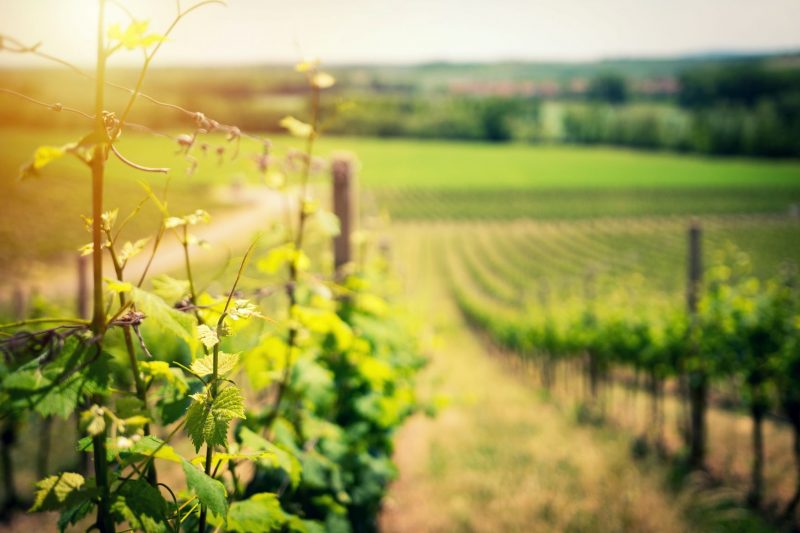For California vintners – and California wine consumers – the Golden State has truly entered its Golden Age. The fourth largest producer of wines in the world, California has matured in its approach to grape growing and wine making to the point where it no longer has anything to prove, and is using past successes to retain and improve on the type of wines that put it on the international wine map. These same past successes have inspired the newer generation of winemakers – led, in part, by consumer demand for something new.
This theme was explored in an engaging virtual presentation hosted by renowned Sonoma-based wine writer and speaker Elaine Chukan Brown. Several white wines, grouped into pairs, were tasted as she led participants on a geographical and historical vinous tour that showcased (in each pair of wines) iconic styles from the past that remain as important today as they ever were, and some newer expressions coming both from emerging regions and from grape varieties that may have always been around, but had largely been ignored.

As with many New World wine-producing regions, early California wines tended to model themselves on Old World benchmarks. While Chardonnay may be the most widely planted variety in the state today, California’s initial success with white wines came via a grape that perhaps doesn’t get the respect it deserves.
Pioneer winemaker Robert Mondavi had visited Bordeaux and developed a particular fondness for the dry white wines of the region. He was certain that California had the potential to produce equally stunning Sauvignon Blanc-based wines. Upon discovering the meticulously-farmed, four hectare To Kalon vineyard, with its plot of what is believed to be the oldest planted Sauvignon Blanc vines in the state, he created the first ever wine from his eponymous winery: the barrel-fermented, barrel-aged Fumé Blanc. The Robert Mondavi Winery Fumé Blanc Reserve 2015 contains a small percentage of fruit from those ancient vines, as well as a small amount of Sémillon to add structure. Aromatically complex, with suggestions of waxy lanolin, orange zest, baking spice, and a wisp of flint, its expansive palate evokes Anjou pear, with some tropical fruit and candied lemon notes.
If that wine offered a window into California’s white wine past, the Oak Farm Albariño 2018 from the Lodi AVA showed where some intrepid winemakers are going today. Generally seen as a hot region producing muscular red wines, there are areas within Lodi that are actually very cool, with (somewhat surprisingly) a strong maritime influence. The Albariño variety itself, with its long history on the Iberian Peninsula, is a relative newcomer to California, with the first vines in the ground a couple decades ago. Yet its performance in Lodi and surrounding areas has shown its potential. Oak Farm’s version proved to be true-to-type, with suggestions of green apple, apricot, mineral and savoury notes, all held together with crisp acidity.

While adventurous winemakers are enjoying success with experimental grape varieties, others are finding success with varieties that are already successful.
Most wine lovers probably have some familiarity with the “Judgement of Paris” – the now legendary wine competition of 1976 that saw California wines trounce the best France had to offer. What you may not know is that this outcome caused so much consternation among the French that a re-staging was carried out pitting French Chardonnays against international competition. Again, California took top honours. Mon Dieu. Feeling that something must have (again) been amiss, the competition was repeated. Once again, California came out on top…with the same wine…of the same vintage. That wine was Trefethen Chardonnay 1976 from Napa’s Oak Knoll district. Burgundian stalwart Robert Drouhin was claimed then to have said: “Trefethen Chardonnay will be the benchmark from which all other Chardonnays are now measured.” Today, Trefethen crafts traditional Napa Chardonnay from its cool vineyard sites. The Trefethen Chardonnay 2018 is poised, elegant, and subtly complex, with exceptional balance and length. Wood and alcohol are both restrained, allowing the apple blossom and white peach flavours to show through. Lots of aging potential here.
Successes like Trefethen’s (and others) helped to cause a significant historical shift towards quality in the California wine industry in that, for the first time, the price of selling grapes became more than the cost of growing them. Farmers that had to rely on growing other crops to support their grape harvest were suddenly able to focus (and survive) solely on growing high-quality grapes. Vineyards prospered.
Another thing success brought was the confidence for California’s winemakers to push past proven historical vineyard areas. If Chardonnay worked well in Napa and Sonoma, why not in, say, the small, cool, Edna Valley AVA? In fact, Chardonnay became the first significant variety planted in this relatively new AVA. The Edna Valley Vineyards Central Coast Chardonnay 2017 weaves together layers of orchard fruit, with hints of flower blossom, lemon custard and subtle, toasty oak.
Chukan Brown concluded her presentation by summing up the state of present-day California wines: “I really believe that California today is at the widest possible expression of styles, varieties and regional successes than it has ever had in its history.”
